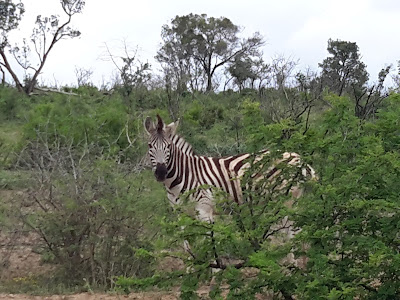EAST LONDON TO CAPE TOWN
DECEMBER 10-14, 2016
We departed
the East London anchorage at 0754 hrs local time (UTC+2) for Cape Town or as
far as we could get before another SW’ly comes rolling up the East Coast. Local sailing knowledge suggests that the
best time for departure is at the tail end of a SW’ly when the barometer has
almost topped out but still climbing.
Conditions might be choppy outside but the winds will come around to the
S >SE>E>NE and should provide at least 2-3 days of good sailing before
the advent of another Low. One has to
get out into the Agulhas current and move as quickly as possible. Motor sailing becomes necessary to keep up
the minimum speed to 6-7 kts. The
Agulhas current is usually found around the 200m contour depth off the
continental shelf. It runs anywhere from
2-6 kts and is about 12-25 nm offshore.
Closer inshore there is a counter current that has to be avoided. It’s best not to get too far offshore in case
an unexpected SW’ly pops up. In that
case, one moves closer inshore and manages as best as possible. The bright side is that a significant SW’ly
Buster isn’t likely or one wouldn’t have left a safe harbor in the first place.
Port
Elizabeth (33-57.2’ S; 25-38.6’ E) is 130nm from East London. The Agulhas current runs very strongly
between the two ports. Assuming a minimum
speed of 6 kts, one can get there in 22 hrs or less. There are no anchorages between East London
and Port Elizabeth. Once past there, the
East Coast gradually turns to the South then West and safe anchorages become
available all the way to Cape Agulhas.
Mossel Bay (34-10.6’ S; 22-08.5’ E) is a
very popular anchorage to wait out a pending SW’ly Low. It is 125nm from Cape Agulhas (The Cape of
Storms). This is another bottleneck in
the southbound voyage. The Agulhas
current is diminishing and will change direction at the Cape Agulhas Banks and
head back East towards Australia.
Because the Indian Ocean meets the South Atlantic Ocean at this cape, it
must be rounded under moderate conditions.
There are anchorages close by to take shelter and wait for an opportune time
to round Cape Agulhas.
On December
11th the winds came around to the ENE and started to blow 25-30 kts;
the seas quickly built up to over 12’ but were behind us. I moved in closer to Mossel Bay to get out of
the worst of it because the forecast was 35-40 kts just 10 miles south of
us. The gale force winds didn’t last
very long and by 0500 hrs on December 12th we were motor sailing
once again with a light ESE’ly wind
about 10 kts. This eventually veered
into the SW 10-15 kts which was acceptable because the Agulhas current had
diminished. At 0600 hrs on December 13th,
we rounded Cape Agulhas (34-55.4’ S; 19-59.7’ E) under very pleasant
conditions. The wind was SSW 10 kts;
seas 6’ SW’ly swells. We set a course of
295 T for Cape Town. Five hours after
rounding the Cape, the winds backed into the SE and started blowing 25-35
kts. This is the prevalent wind for Cape
Town during the summer and it can blow quite hard. I wanted to make a daylight arrival into Cape
Town so I reefed in the jib to almost nothing; still we were making 6 kts and
surfing off the bigger waves at 8-9 kts.
The Valiant is a great heavy Wx boat and can handle these conditions
effortlessly.
We arrived
at Cape Town at 0300 hrs local. It was
still blowing 25-30 kts and continued to do so until we finally got behind a
headland that blocked the wind. Once
inside the harbor, the wind dropped out completely and we took in sail and
started to motor: feast or famine. That
has been the pattern all along the East African Coast. We are relieved to have it behind us. It has a well-deserved reputation of being a
challenging environment to sail.
Our entry
into the Victoria & Alfred Marina was just beautiful. One goes through two bridges to enter the
marina. There in the background is Table
Mountain, seals are swimming all around the boat and our cruising friends are
standing on the dock to help us tie up; it’s 0630 hrs in the morning. We are overcome with joy and relief.
Cape Town is
magnificent. We are in the heart of the
V & A development complex with all the amenities of a great city. The architecture is Victorian and just about
every conceivable activity is happening.
The Christmas theme and lights are everywhere; caroling, bands,
individual musicians, contortionists, clowns, etc.; A hotbed of activity. There are restaurants, bakeries, cheese, wine
and all the local fruits and vegetables.
All of this caters to the tourists that come from every corner of the
world. The seals are everywhere and take
over the pontoons at which the yachts are moored. They are reluctant to move and challenge you
when you try to shoo them away to board the yacht; occasionally, a yachtie gets bitten. They are noisy, argumentative, stink and keep
you awake at night; nevertheless, delightful to have around.
In the
coming days, we will explore the beauties of this magnificent city. Every morning I look out at Table Mountain to
see if it is donning a “table cloth”.
This happens when a strong SE’ly wind is blowing: the white clouds heap up on top of the flat table
top mountain and give it a table cloth.
So here we
are, at the threshold of the South Atlantic Ocean. We will be here until mid-January 2017 and
then start our long voyage back to the States.
































































